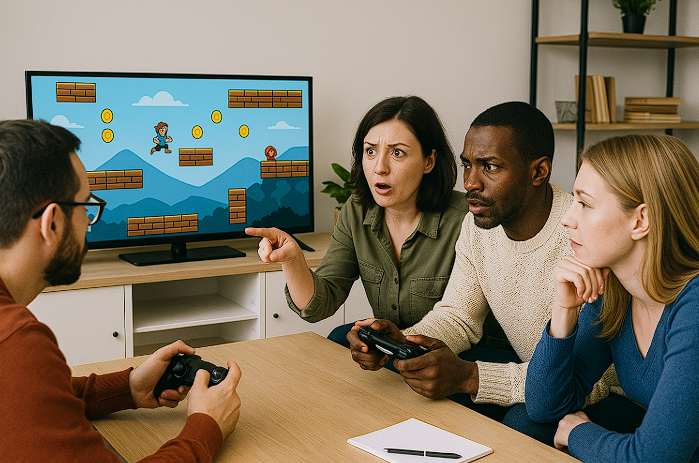What Makes a Game Fun? Lessons from Playtesting

If you've ever launched a game and felt something was missing—even though everything worked—you're not alone. The truth is, fun isn't something you can code directly. It's something you feel — and playtesting is the only reliable way to uncover it. In this post, I'll share what I've learned from watching people play my games, what "fun" actually means in game development, and how you can shape your games to deliver it.
🧠 "Fun" Is Feedback in Disguise
When players say a game is fun, they're not describing a feature. They're reacting to:
- Challenge and mastery
- Surprise and curiosity
- Flow and engagement
- Reward and satisfaction
Fun = The right mix of difficulty, clarity, feedback, and reward. And this isn't something you guess—it's something you observe.
👀 Why Playtesting is a Superpower
When I started making games, I thought I could design fun from the start. But the moment I watched someone else play my game, I learned more than I had in weeks of development. Here's why:
- Players don't read your mind. They play based on what they see, not what you intended.
- They break your game in surprising ways.
- They show you where boredom lives.
And most importantly—they expose the gap between what you built and what you meant.
1. Clarity Beats Complexity
Every time a player didn't understand what to do in the first 10 seconds, I lost them. 💡 Lesson: Your game should teach itself through design. Use animations, level design, and tiny prompts to show the player the path—don't over-rely on tutorials.
2. Struggle Is Good. Confusion Is Not.
Players love overcoming challenges. They hate not knowing what's going on. 💡 Lesson: Make challenges obvious, but solutions hard. If they fail, it should feel fair.
3. The First 30 Seconds Are Everything
You have less than a minute to hook someone. If the controls feel bad, the pacing is off, or nothing interesting happens—they bounce. 💡 Lesson: Start strong. Give instant feedback. Make the player feel powerful or curious right away.
4. Too Much Waiting = Instant Boredom
Menus, loading screens, or unskippable cutscenes? Instant frustration. 💡 Lesson: Keep downtime short. Let players restart quickly. Respect their time.
5. Juice = Joy
"Game juice"—the satisfying polish that makes things feel good—kept players smiling. This includes:
- Screen shake
- Sound effects
- Particle bursts
- Vibrations
- Reward animations
💡 Lesson: Even a simple click feels better when it pops. Small effects add up.
6. Players Will Always Surprise You
One of my games had a hidden strategy I never thought of—and players loved it. Another had a feature I thought was cool, but nobody used it. 💡 Lesson: Don't fight the players. Watch how they naturally interact with the game—and build around that.